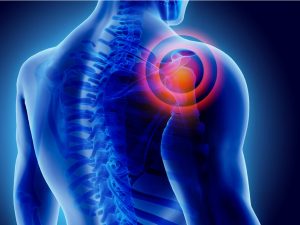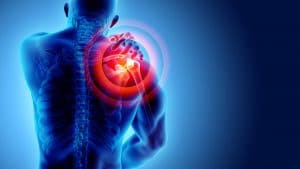
New York City Shoulder Accident Injury Law Firm
- 1. Timely medical exams are also helpful since shoulder pain may not appear right away
- 2. Shoulder accident symptoms that may – or may not — appear immediately
- 3. What types of tests help diagnose shoulder conditions – after a thorough physical exam?
- 4. Basic facts about how the shoulder joint is constructed
- 5. Common shoulder injury diagnoses made after running the tests named above
- 6. Immediate treatment plans often include the following three recommendations
- 7. Rehabilitation exercises for shoulder injuries must be regularly reassessed
- 8. Legal help for a shoulder injury
Many people develop serious shoulder pain due to New York City motor vehicle accidents, falls from great heights at work, and tripping on slippery sidewalks or steps during rainstorms. Yet regardless of the exact dangerous condition that causes your injury, it’s crucial to obtain immediate medical care.
Contact our team at (212) 222-1111 for your free case evaluation.
Once bones in your shoulder’s ball-and-socket joint disconnect or fracture, the pain can be intense. After your doctor performs a thorough physical exam and runs the proper medical tests, you might be diagnosed with a painful ailment such as a torn rotator cuff, a herniated disc, a pinched nerve, or a dislocated shoulder.
Timely medical exams are also helpful since shoulder pain may not appear right away
In some cases, accident survivors may go weeks or months before experiencing their first painful shoulder symptoms. Since this is true, it’s doubly important after a major accident to visit a local hospital emergency room. The tests that are run may prove helpful once your symptoms start to appear. No one should self-diagnose and just go home after a bad accident. Early exams can also help you timely realize that someone else’s negligence played a role in your accident, making it necessary to sue for recovery, even if you also need to file a worker’s compensation claim.
By continuing to read below, you can learn helpful facts about common shoulder injury symptoms, the most useful diagnostic tests and treatments, common shoulder pain treatments, and potential settlement values if a negligence lawsuit should be filed.
Shoulder accident symptoms that may – or may not — appear immediately
Unusual stiffness
- A diminished range of motion when you try to move your shoulder or arm
- Skin discoloration and bruising
- Tingling sensations or numbness in the shoulder area
- Unusual or new spasms and muscle cramps in your arms or shoulder area
- Upper back pain that may radiate down from your neck
- Swelling in the shoulder area
- Newly experienced weakness when trying to move your shoulder or arms
- A new type of bulge or bump on your shoulder — or next to your collarbone
- Shoulder movements can cause a new kind of joint instability
- Popping or cracking sounds in your shoulder area can start whenever you move about
All these symptoms – or even just one or two – usually indicate a serious shoulder injury. Be sure to seek out medical care sooner than later. Too many car accident survivors are so eager to go home that they don’t realize that they are likely to wake up in excruciating pain the next morning. Yet as noted above, others who usually lead more sedentary or quiet lives may not discover their shoulder damage for many weeks or months.
By documenting all early damaged joint locations with X-rays after any major fall or motor vehicle accident, you’ll help all future physicians more readily provide you with an accurate diagnosis. This is especially true for those whose pain or shoulder dysfunction appears slowly.
What types of tests help diagnose shoulder conditions – after a thorough physical exam?
- X-rays. As indicated briefly above, most healthcare providers will take X-rays before deciding if any other diagnostic tests are necessary. Of course, if you are already experiencing great pain – be sure to be open about this fact. Doctors may then go ahead and run some of the following tests to help them more readily pinpoint the source of your pain.
- CT scans. A computerized tomography test produces a series of images, including some unique cross-sectional views that help indicate exactly where your pain may be originating.
- An EMG. When your doctors suspect you have suffered some nerve damage, they will likely run this test. It allows doctors to observe how your muscles respond to the stimulus of specific types of electrical activity.
- If other tests are not producing useful results regarding the source of your pain, this surgical procedure can allow doctors to use a fiber-optic camera to look directly into each joint that may have been damaged. This process can also help physicians spot other soft tissue injuries not previously found during one or more of the other tests already referenced above.
- This type of X-ray study involves injecting dye into the shoulder joints to help doctors locate the precise damage to muscles and tendons that did not appear during other tests or procedures.
Basic facts about how the shoulder joint is constructed
The shoulder is made up of the following three bones.
- The upper-arm bone is called the humerus
- A second bone is called the shoulder blade or scapula, and
- The third bone is known as the clavicle or collarbone
All these bones are held in place within the joint socket by the rotator cuff. During a bad car accident or after a serious fall, a shoulder bone may completely move out of its normal position within the joint socket. When the socket shifts, you’ll likely develop a dislocated shoulder. If your shoulder bone is completely ejected out of the socket, you’ll likely be diagnosed with a shoulder separation.
Common shoulder injury diagnoses made after running the tests named above
- A dislocated shoulder. Patients often notice this when there is tremendous swelling in the shoulder area, a great difficulty in even trying to move the shoulder joint, and bruising. It’s also common to report tremendous pain, and to have a shoulder that may look deformed to most people.
- A SLAP tear. This is sometimes referred to as a torn labrum. Your doctors will be able to diagnose this once they see that the cartilage within the shoulder is torn. You’ll need a very experienced doctor to distinguish this injury from a torn rotator cuff.
- Bone fractures. A shoulder bone may completely break or just endure a hairline fracture that does not involve a full break.
While first examining you, your doctor will evaluate your full range of motion, how much pain you report, and if it appears that any bones have clearly moved out of position.
Immediate treatment plans often include the following three recommendations
- A change in recent job or other daily activities. If your accident occurred on the job, you may be taken off work for many weeks or possibly longer. In unusually severe cases, you may have to stop work completely – or look for a job that doesn’t involve any manual or significant physical labor. Caregivers at home may need to immediately hire outside help since they may no longer be able to easily pick up and care for an infant – nor help an older relative. The latter person often requires regular assistance moving in an out of bed or while handling other basic tasks like dressing or eating.
Addition of one or more RXs or OTCs. Although prescription pain killers are available, today’s addiction concerns motivate most doctors to urge you to try and simply use over the counter (OTC) drugs that address inflammation and pain. The use of potent narcotic drugs for pain will normally only be allowed for short-term use.
- Physical rehabilitation exercises or therapy. Even though it may feel painful to try and do certain exercises with limited repetitions, this is almost always better than allowing inactivity and bone stiffness to develop. In a fair number of cases, patients will improve significantly, eventually returning to work or most (if not all) of their prior activities.
- Massage therapy and alternative remedies. Although many health insurance policies will not cover massages, they can provide meaningful, temporary relief to many patients. Some patients may also pursue acupuncture and other non-mainstream remedies for their pain when drugs fail to help.
- Ice and heat therapy. As your orthopedist and other specialists may tell you, ice and heat therapy often provide meaningful relief to many patients. It’s important to try both at different stages of your recovery – as the one that’s most helpful may change over time.
- Plentiful rest. Even short daily naps or taking one or two days off from physical therapy can have a healing effect on a painful shoulder injury.
Rehabilitation exercises for shoulder injuries must be regularly reassessed
Always make sure you are only using the exercises most recently given to you by your physical therapist or treating physician. If your pain has recently returned, be sure to tell those managing your treatment so they can either have you take a brief hiatus or choose new, carefully monitored exercises
Legal help for a shoulder injury
If you have suffered a serious shoulder injury after an accident caused by someone else’s negligence, you need to contact our New York City shoulder injury law firm. We will carefully investigate all the facts of your case, review all your medical records, and then fight hard to win the maximum compensation available to you. We want every client to fully recover for all lost wages, pain and suffering, medical expenses, and other losses.
Contact our team at (212) 222-1111 for your free case evaluation.
Fill out the form below & we will contact you as soon as possible.
We can tell you if you have a case or not within five minutes, Call (866) 288-9529
FREE CONSULTATION · NO FEE PROMISE · OVER $900 MILLION RECOVERED



 Unusual stiffness
Unusual stiffness

 Addition of one or more RXs or OTCs. Although prescription pain killers are available, today’s addiction concerns motivate most doctors to urge you to try and simply use over the counter (OTC) drugs that address inflammation and pain. The use of potent narcotic drugs for pain will normally only be allowed for short-term use.
Addition of one or more RXs or OTCs. Although prescription pain killers are available, today’s addiction concerns motivate most doctors to urge you to try and simply use over the counter (OTC) drugs that address inflammation and pain. The use of potent narcotic drugs for pain will normally only be allowed for short-term use.